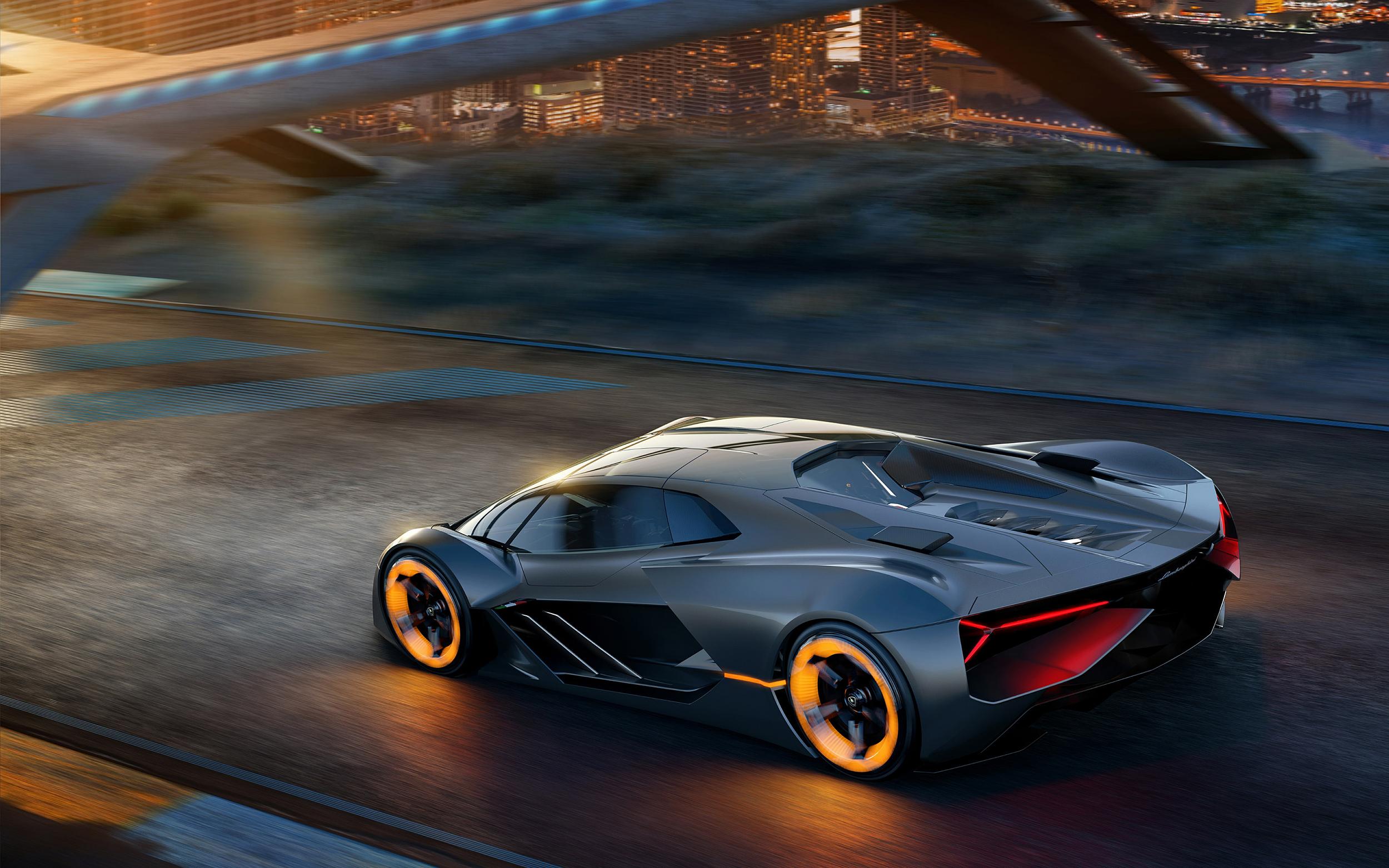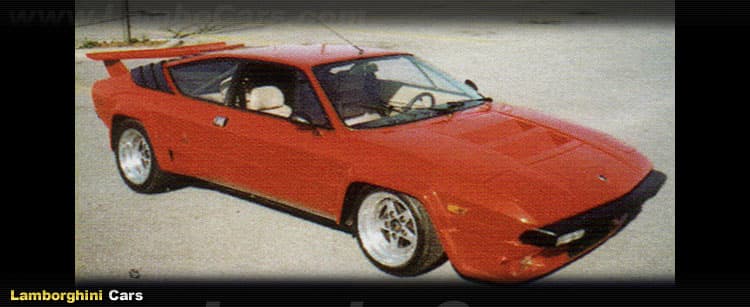For every supercar that has come out in the past thirty to forty years, there has been a team of designers, engineers, drafters, technicians, and many more that have spent untold hours of prototyping all the parts that will make up this new supercar. Sometimes, the investment in money and time is so extreme that it warrants making a concept car. These are often one-off show cars that are meant to give an idea about the aesthetic, the technology, or something about the upcoming car that needs a public reaction to gauge interest and if the car is even worth developing.
Lamborghini, on the other hand… isn’t like that. Even after their acquisition by the Volkswagen group, as part of the Audi brand, there have been some completely off the wall concept cars made, not to be put into production or even to gauge interest, but just as a “because we can” statement. Of course, a couple of those concept cars did get made into limited run supercars, but more often than not, they are just about bringing a paper idea to reality to see if it works.
Throughout Lamborghini’s almost 60 years, there have been some concept cars that were either truly and completely mad, which is something that we all love about the raging bull company, or were so popular that they led to the development of new cars just from potential customer interest. Here, then, are some of our favorites, from the completely insane to the downright practical!
2017 Lamborghini Terzo Millennio
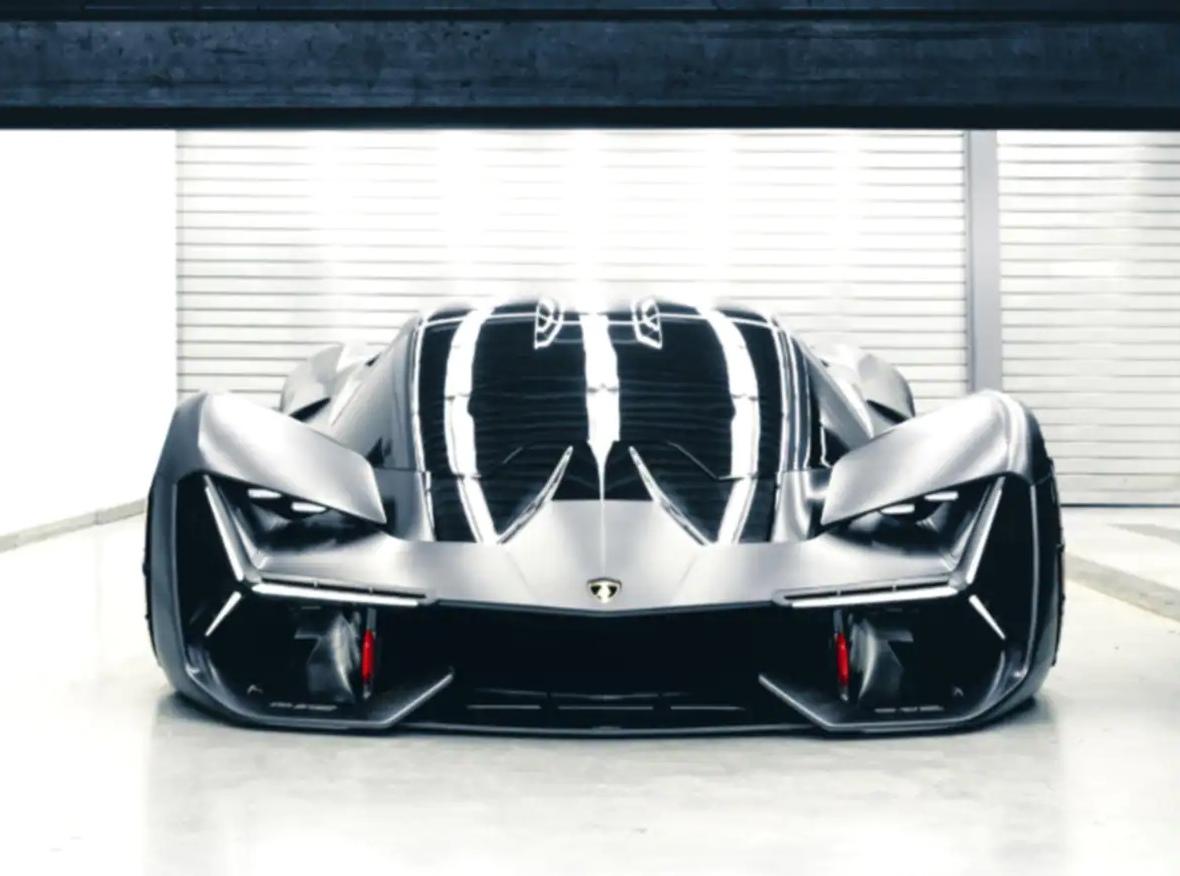
The Terzo Millennio (Third Millennium) is what you get when you put a team of aerodynamicists, future powertrains engineers from M.I.T., and a couple of guys with sketch pads in a locked room for a full day. One of the newest in the stable of Lamborghini concepts, unveiled in 2017, the Terzo looks like a road-going stealth bomber that had a head on collision with a Le Mans prototype. Designed to be powered by electric motors only, the whole body is shaped to use every single molecule of air passing over, under, and through the body to generate downforce, while being as minimally disruptive to that airflow as possible.
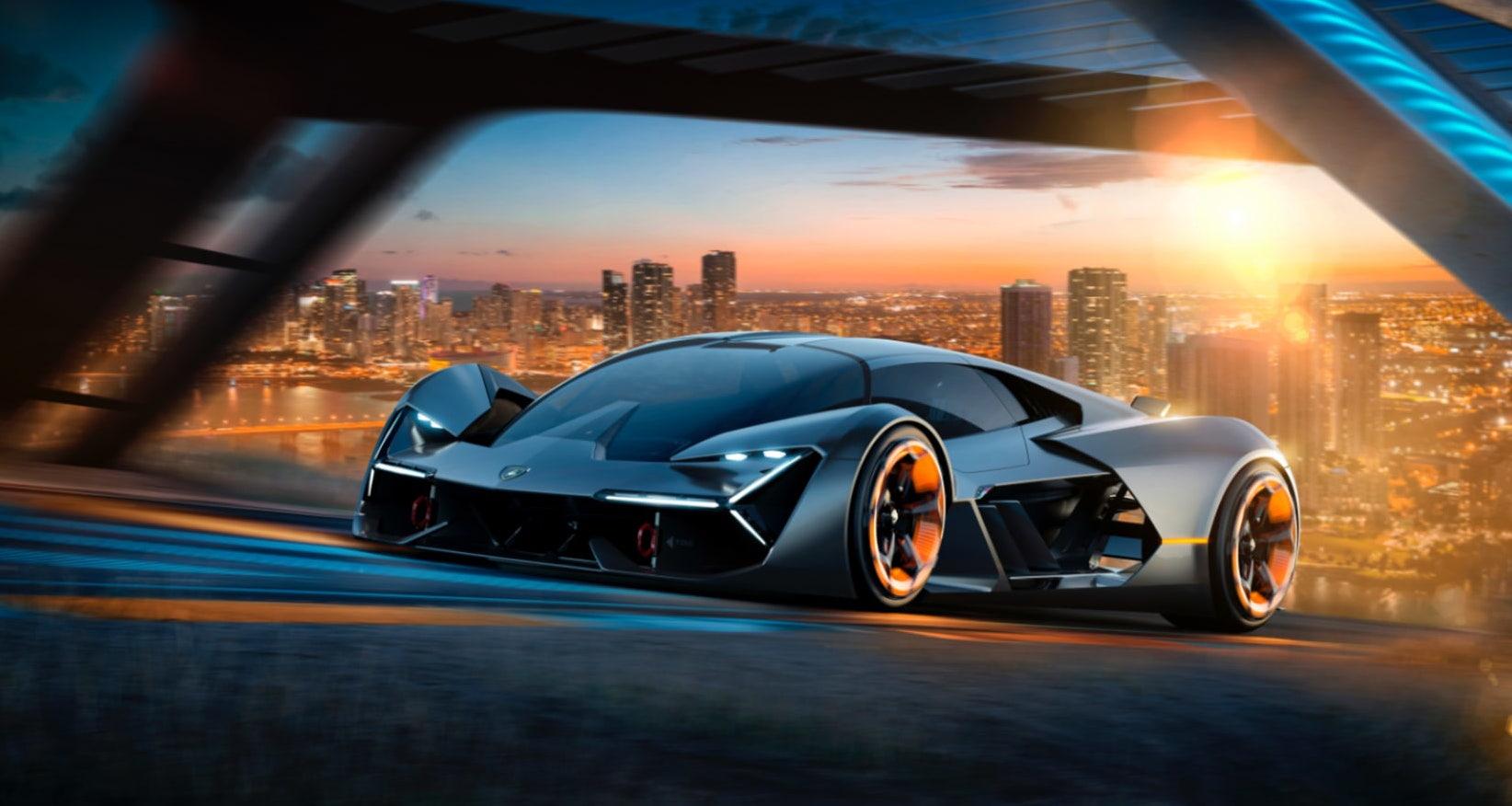
This is achieved through a double body concept, with the cockpit and rear structure being one body, and the front end through to the traditional Lamborghini side scoops being another. In this way, the air flows through the front end and is split along both sides of the cockpit, before encountering a set of barge boards that direct some airflow out over side of the car. The rest of the air is kept running down the floor of the car to enter the scoops, which are most likely to be split to both cool the electronics and batteries, as well as direct some air for rear brake cooling.
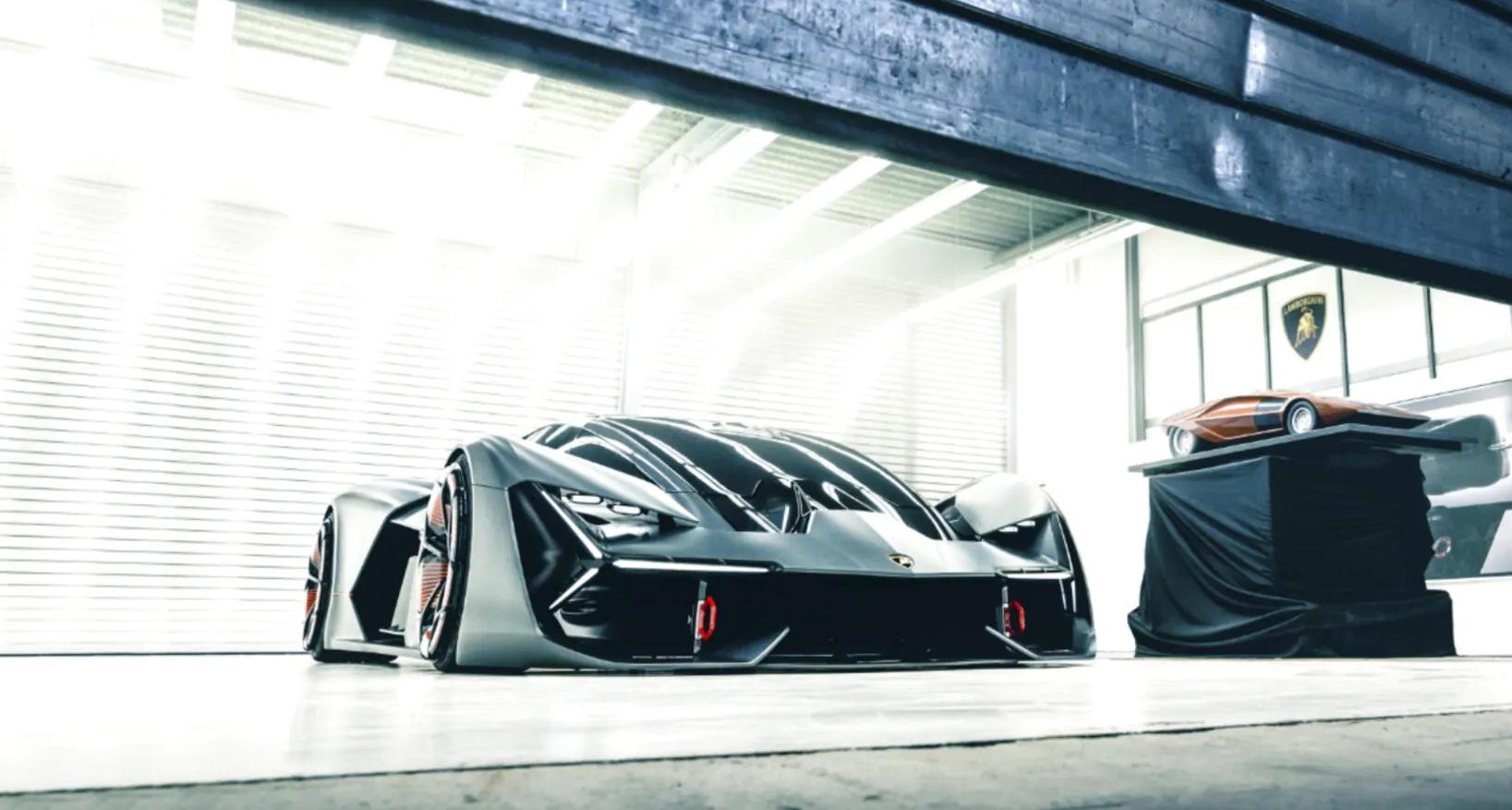
The Terzo Millennio is also a materials research concept, much like the Sesto Elemento was as a limited development car. Again, the primary material is carbon, but in the Terzo, Lamborghini is investigating a new type of composite that weaves kevlar in with the carbon fiber, to create CFK, or Carbon Fiber Kevlar. Traditional carbon fiber, while extremely strong, is also not very flexible, and any incidents usually end up with shattered carbon body panels. By introducing kevlar, it both adds a lot more elasticity to body panels, as well as allows for a thinner, lighter type of carbon fiber to be used.
1988 Lamborghini P140 Concept
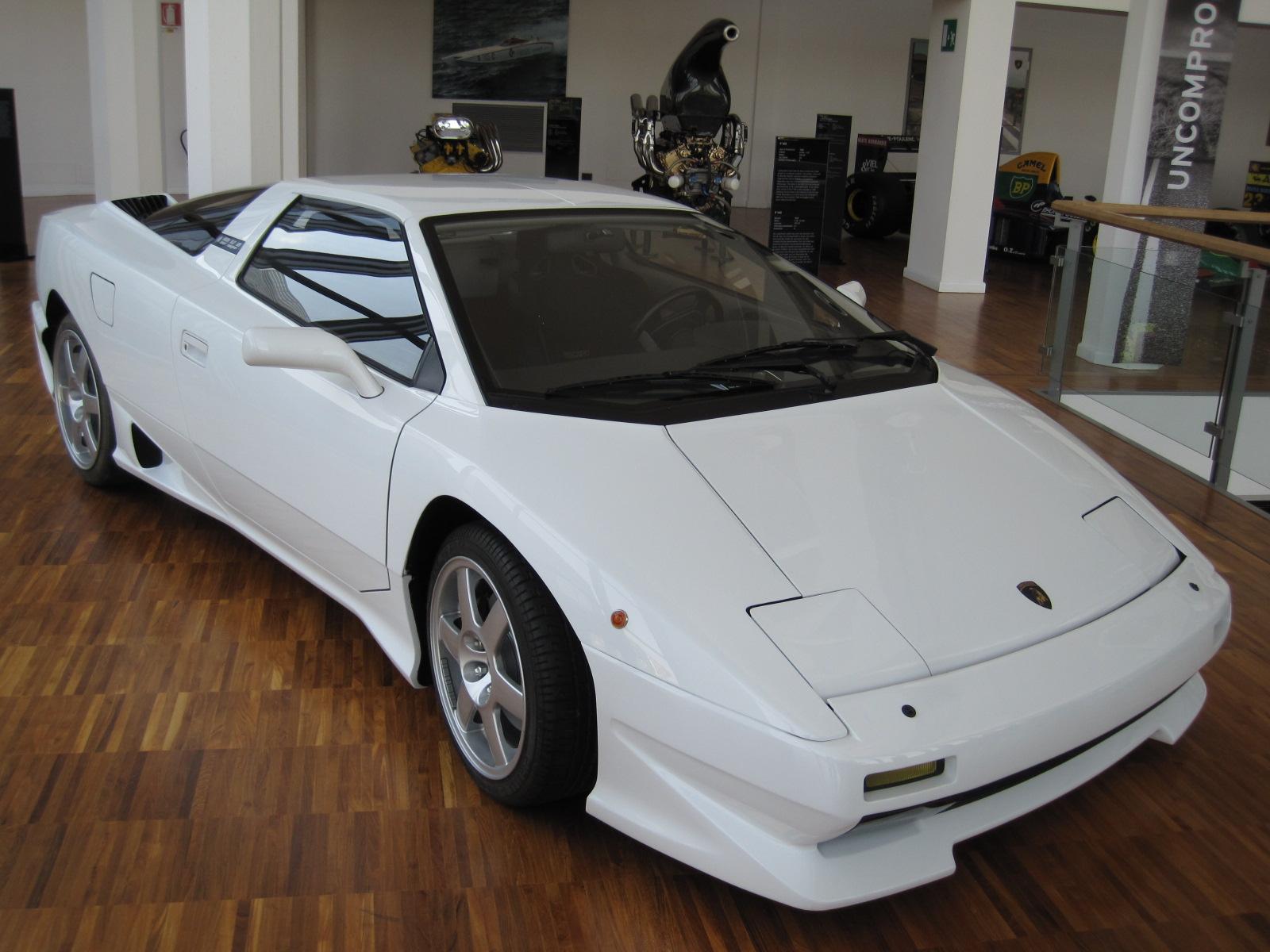
Image Credit: wikimedia
The 1980s were the start of a very bumpy, wild ride for Lamborghini, as it changed ownership almost every three to four years. It was the time that the flagship Countach, the moderately successful Jalpa, and failure that was the LM002 utility vehicle all found their ends. However, despite a lot of models being wound down, there was enough money still around that at least two models were undergoing concept work and prototyping to replace the outgoing models.
Project 132 is the name that was given to the prototype that eventually became the Lamborghini Diablo. Project 140, or P140, was the car that was being developed to replace the Jalpa, the “affordable Lamborghini” as it were. It had all the right numbers in all the right places, and even had a moderately similar look to the Diablo’s design language. It was powered by a 4.0L V10 that produced nearly 370 HP, and was, at least for the concept, made primarily out of carbon fiber over a steel chassis.
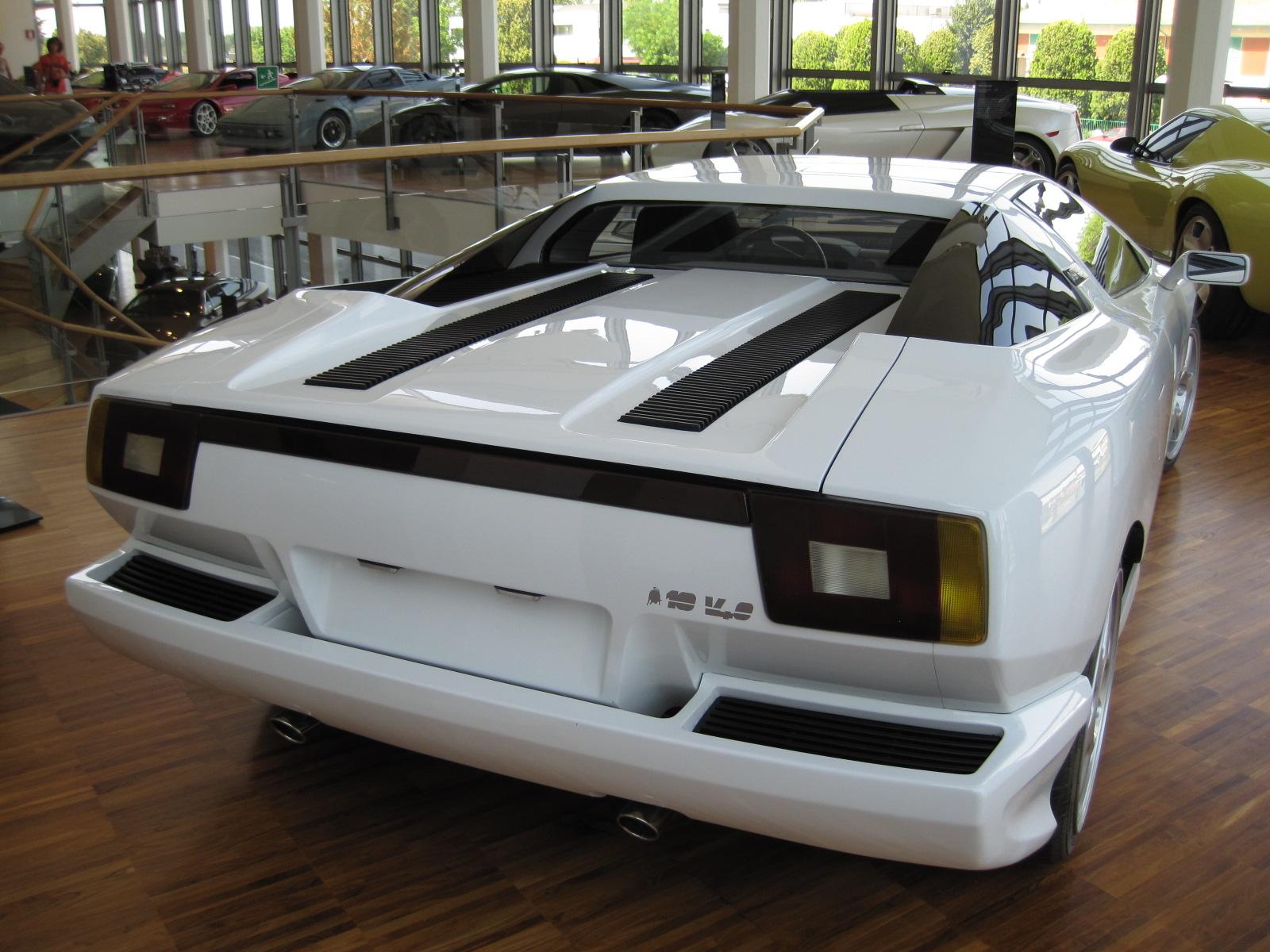
Image Credit: wikimedia
It weighed just 2,835 lbs (1,286 kg), and being rear wheel drive with a 99.3 inch wheelbase, would have been an absolute hooligan of a car to drive. Unfortunately, in the end, only one of the two projects could survive the financial woes that Lamborghini went through in the 1980s, and the P140 was quietly shelved while the P132 was developed into the Diablo.
There was a moment of revival for the P140, as in 1995, the Lamborghini Cala Italdesign was unveiled at the Geneva Motor Show, as a study into a car that could compete with the Ferrari F355. It was so well received, and so much interest was expressed in the car, that it was nearly made into a production prototype before Lamborghini was sold to Volkswagen via Audi. However, its legacy made enough of an impact that a few years later, the Gallardo was released, a spiritual successor to the concept that started as the P140.
1966 Lamborghini 400 GT Monza
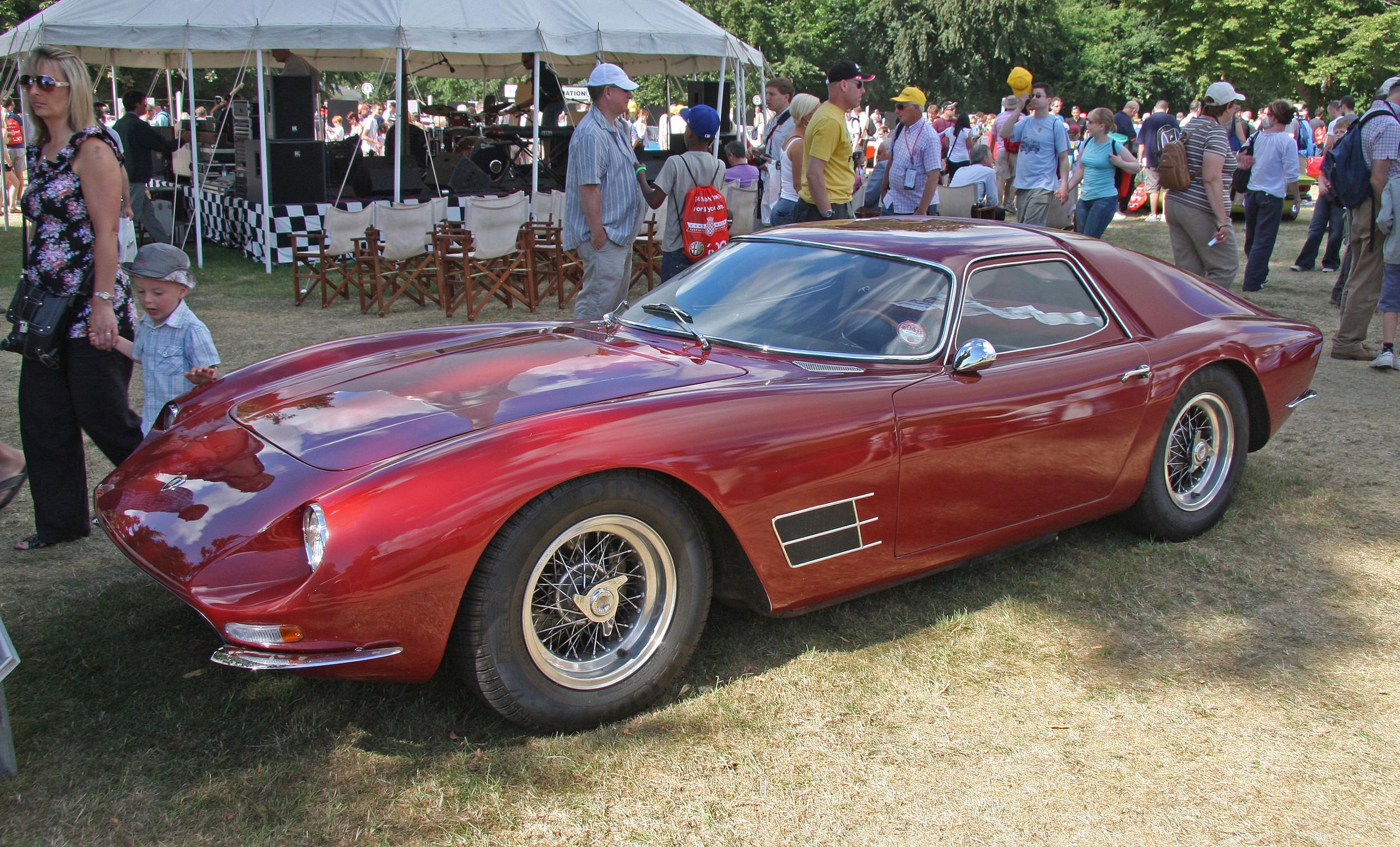
Image Credit: wikimedia
In the interesting and unique history of Lamborghini (read: one hell of a wild ride), very few concept cars are made after a car has already started production. However, in 1966, exactly that happened. The design house Nero & Bonacini were commissioned by Lamborghini originally to provide design input for the 350 GTV, the prototype that eventually came to be the 350 GT after some further work by Lamborghini in-house designer Franco Scaglione.
In late 1965, after the 400 GT made it into production as a slightly larger, slightly longer 350 GT, Ferruccio Lamborghini once again commissioned Nero & Bonacini to create a one-off two-seater concept that took the 350 GT chassis (number 01030 in this case), the larger V12 from the 400 GT, and put them together in a car that could race at the 24 Hours of Le Mans.
Completed in 1966, the car was named the 400 GT Monza, to reflect that it had been designed with speed and racing in mind. It featured a hand-hammered aluminum body of the strikingly distinctive Italian berlinetta style, combined with a Kammback tail to allow for maximum speed. It never did make it to the 24 Hours of Le Mans, however, as homologation requirements did not allow the 350 GT original chassis to be called a 400 GT. Another issue was that while Lamborghini himself liked the car, it reminded him far too much of the Ferrari 250 GT, the car that he had the 350 GT and 400 GT built to supersede.
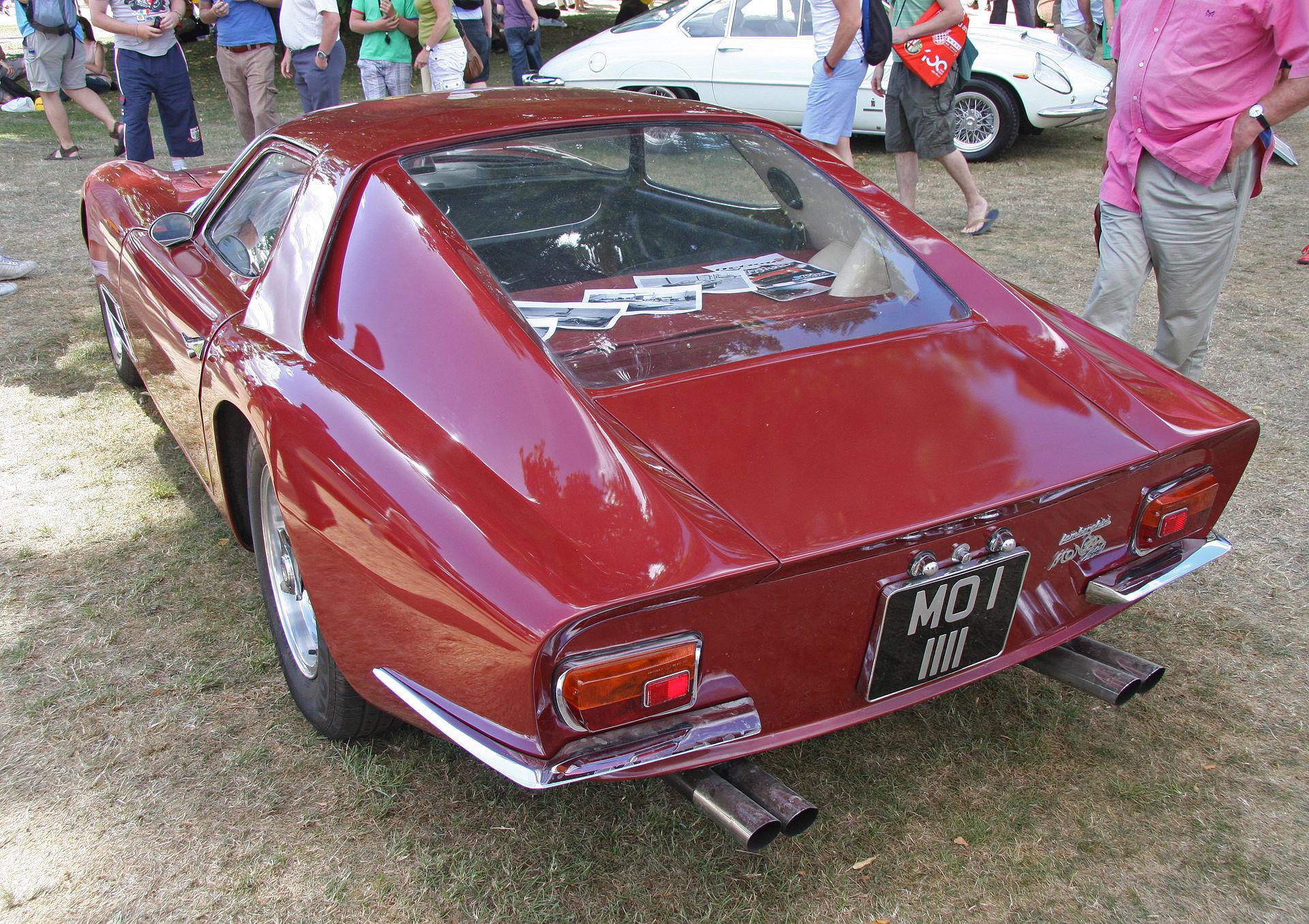
Image Credit: wikimedia
The 400 GT Monza did make an appearance at the 1967 Barcelona Motor Show, and was impressive enough that a wealthy Spaniard bought it on the spot. It remained in his family’s private collection until 1996, after he had passed away, and was eventually sold at auction in 2005 to its new owner for £177,500, which is £247,066, or $341,810 USD in 2021.
2014 Lamborghini Asterion LPI 910-4
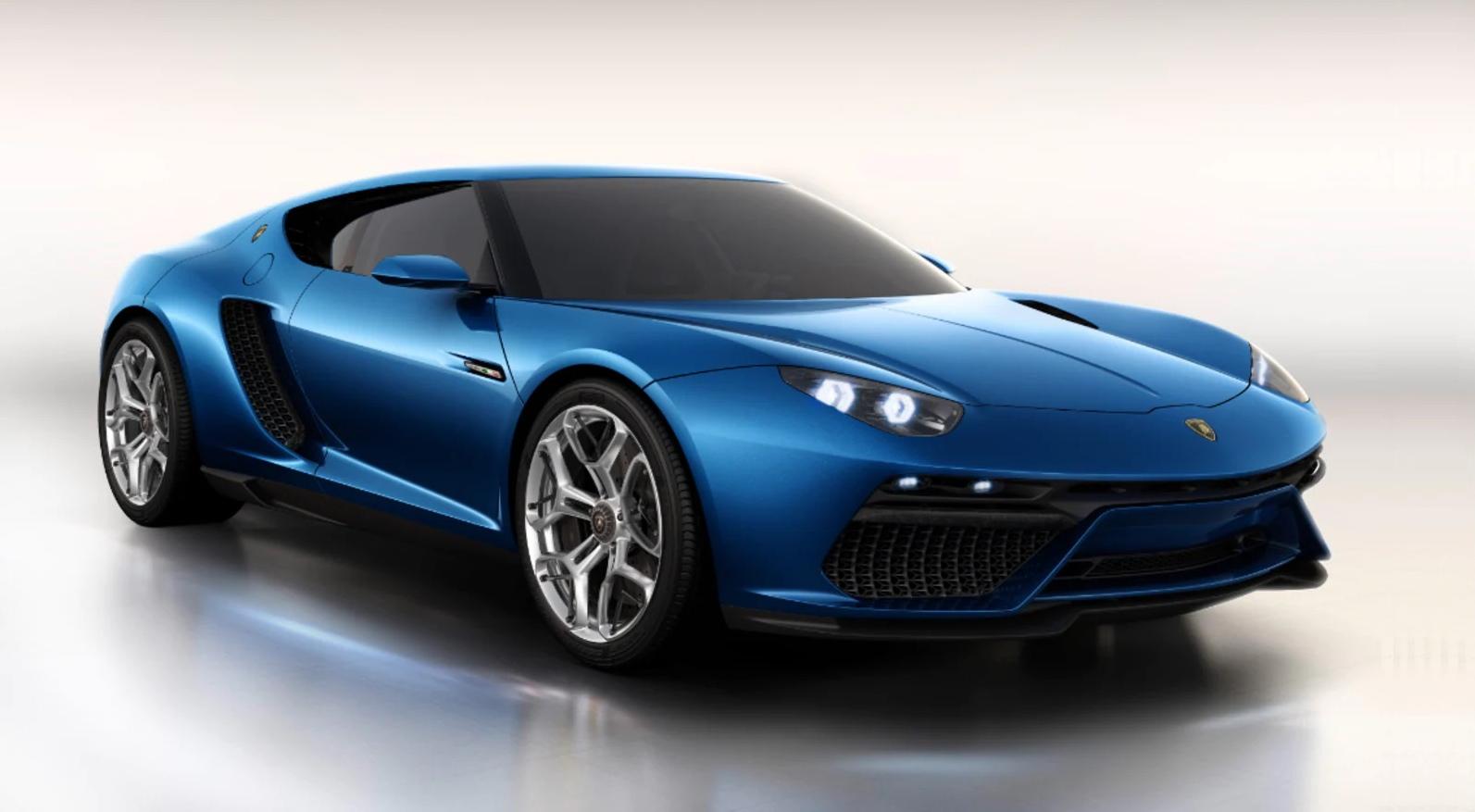
A very understated car, the Lamborghini Asterion may have actually been the most influential and important concept in the history of the company, that is affecting decisions made even in 2021. Designed to show a more comfort-oriented modern Lamborghini, meant as a return to the “Gran Turismo” roots of the company, the biggest and most important thing about the Asterion was its powerplant. Or, rather, its two powerplants.

The Asterion was the first public showing of a hybrid-electric powered vehicle from the raging bull. It is unmistakably Lamborghini, with a massive 5.2L V10 from the Huracan sitting behind the cockpit that chucks out a monster 610 HP, attached to a super-fast 7-speed dual-clutch semi-automatic gearbox powering the rear wheels, shared with the Huracan. The big part of the “technology demonstrator,” as the Asterion was dubbed, was an integrated hybrid system that powered three electric motors. Two motors were at the two front wheels, and one was mounted between the engine and the transaxle-mounted DCT.
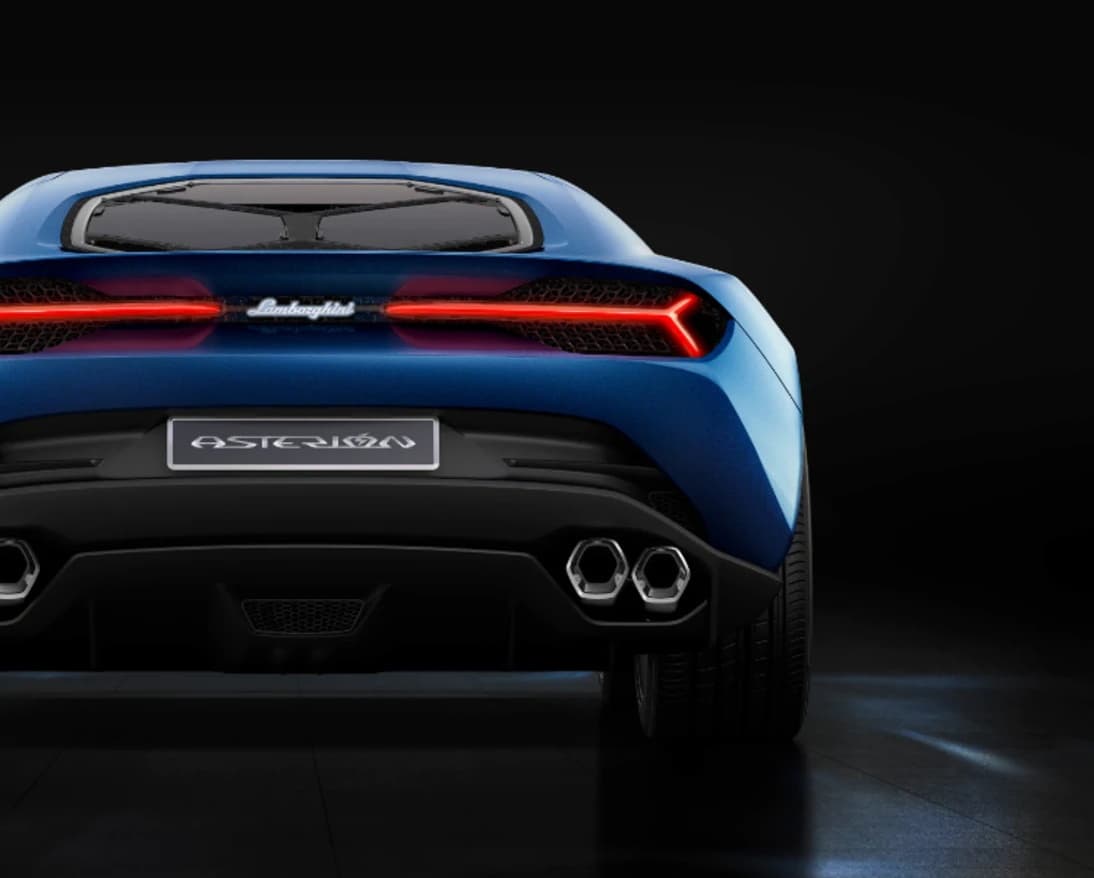
The power these motors provided was not insignificant either. When all three were working together, they generated 300 HP. This is what gives the Asterion the LPI 910-4 name. LPI stands for Piattaforma Inerziale Lamborghini, the first use in the history of the company that denotes a hybrid powertrain. 910 is the amount of horsepower the car produces. The -4 denotes that all four wheels are powered.
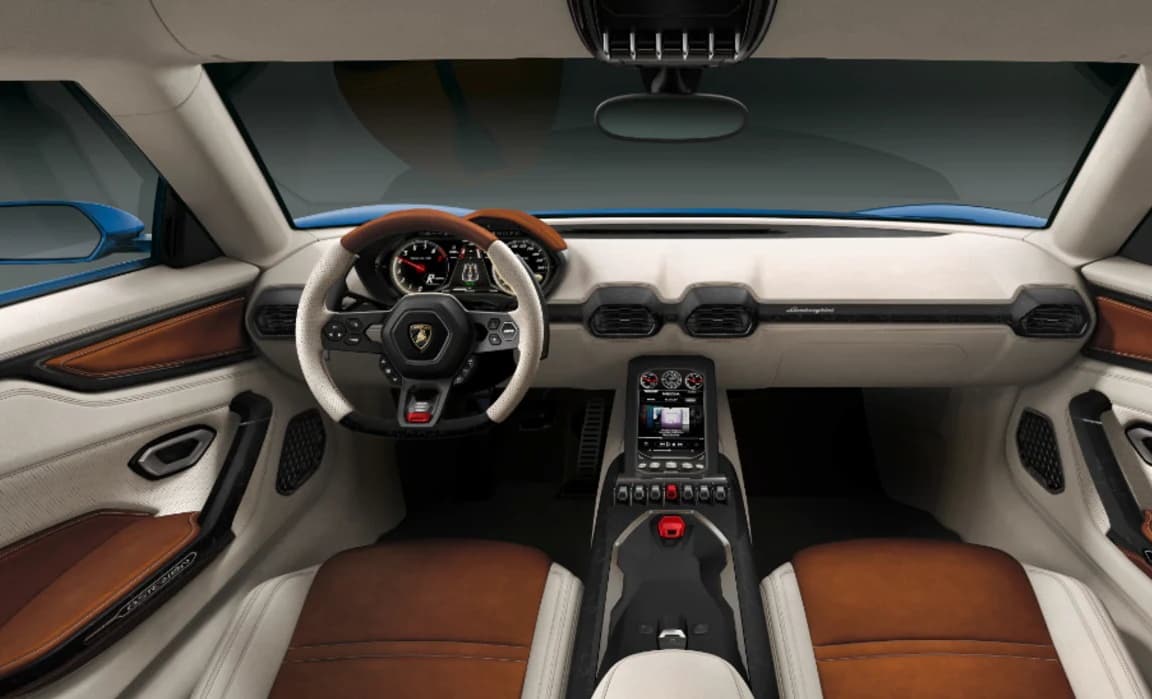
The car was originally meant to be a competitor to the “Holy Trinity” of new hypercars that emerged in the early 2010s: The Porsche 918, the McLaren P1, and the Ferrari LaFerarri. However, it was quietly moved off of production plans in favor of the Lamborghini Urus, as the SUV market was very ripe in the mid-2010s.
So why is this the most important concept in Lamborghini’s history?

The absolutely mental Lamborghini Sian FKP37 took the hybrid idea and ran with it, making a proper limited edition car with a bonkers hybrid powertrain. The recently announced 2022 Lamborghini Countach LPI 800-4 has, as you may have surmised, a hybrid powertrain. The replacement for the Aventador is heavily rumored to be powered by a V10 with a triple-electric motor powertrain. The next car after the Huracan is already all but confirmed to either be hybrid or fully electric.
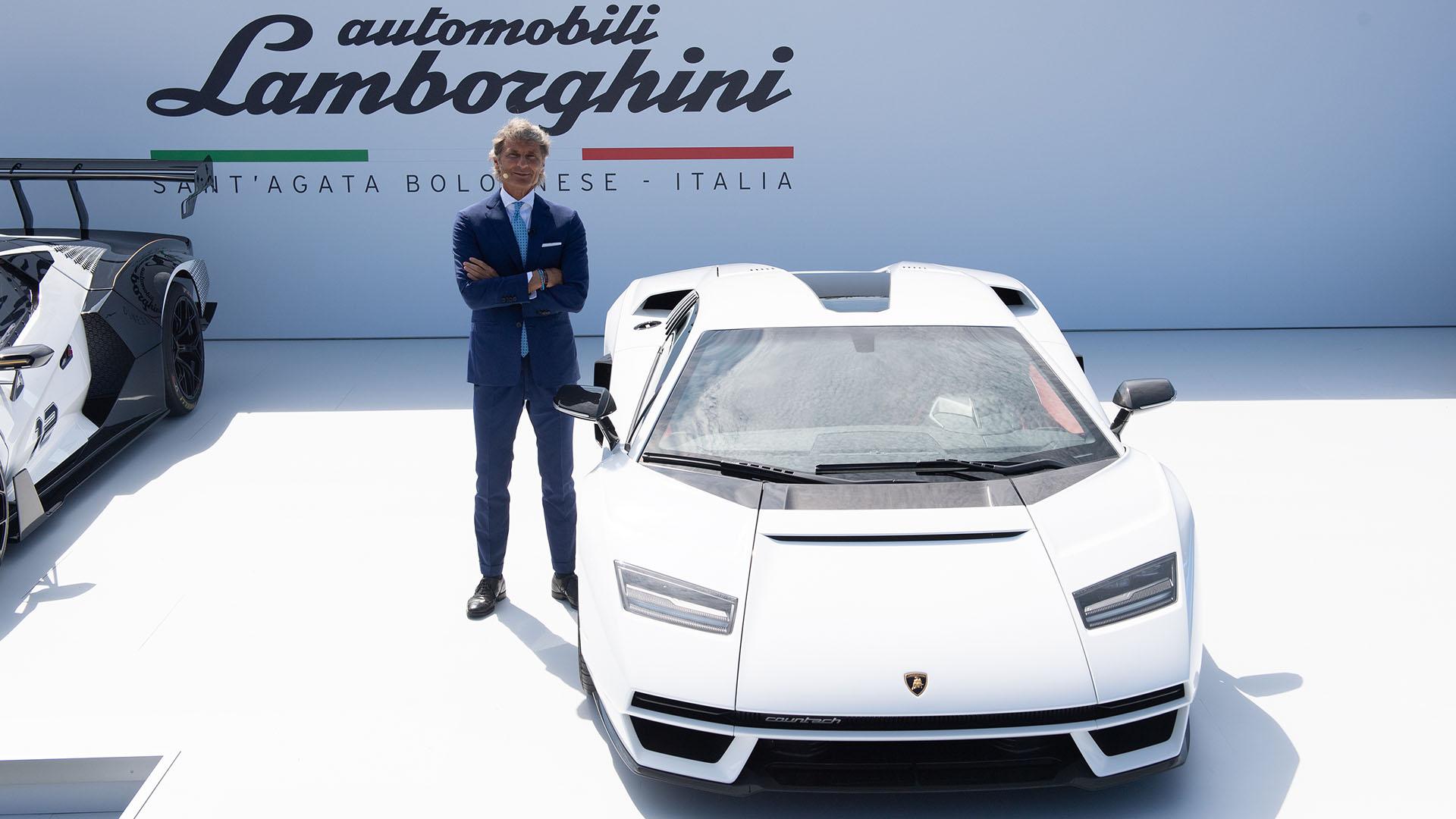
Basically, the Asterion, which was named so after the mythical half-man, half-minotaur of Greek legend, paved the way for hybrid power to be an integrated feature in future Lamborghini cars. Other concepts in the past influenced designs, or were exercises in what could be done, but the Asterion literally started the hybrid era of Lamborghini. Full stop. The end.
2013 Lamborghini Egoista
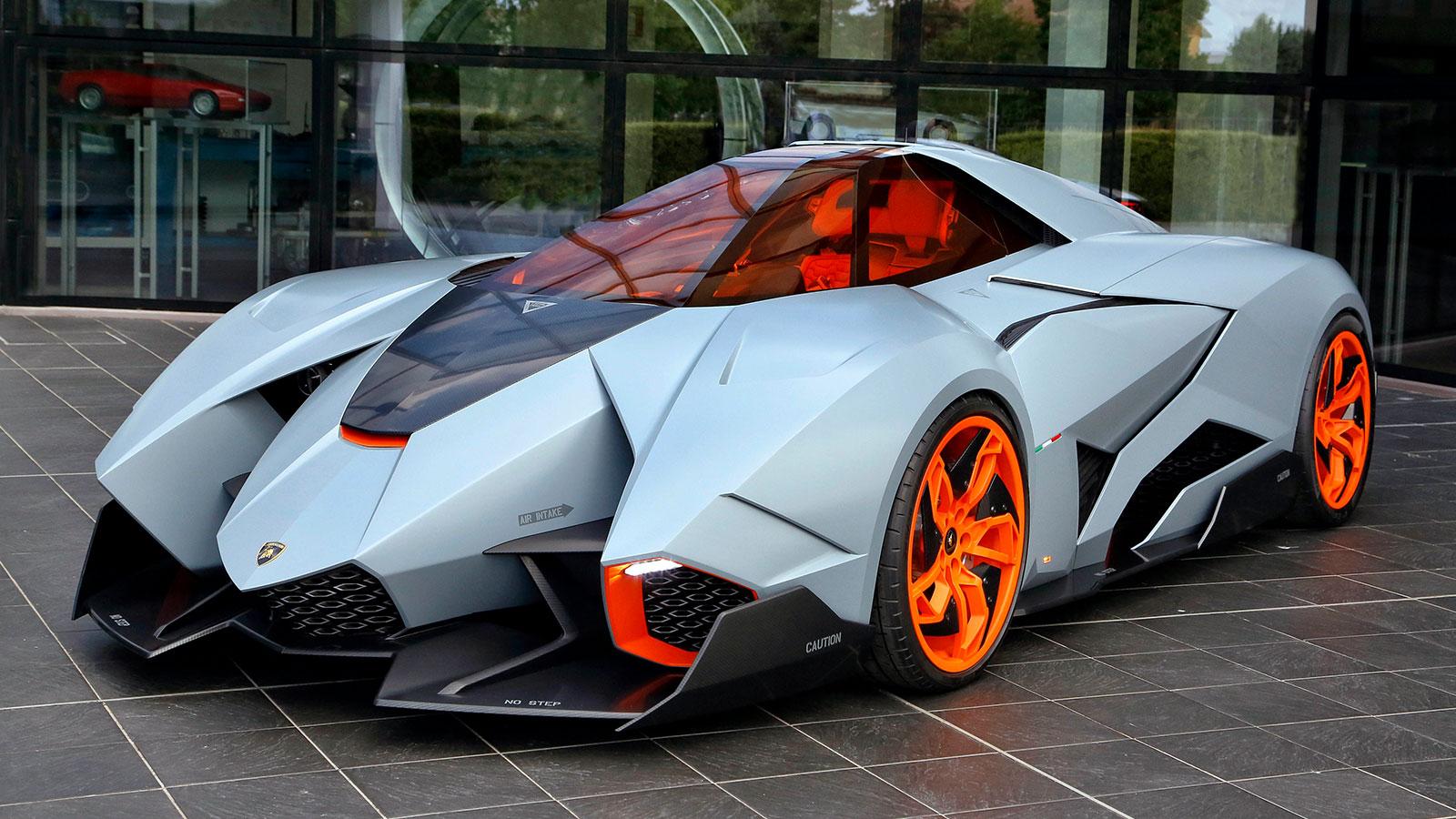
At the start of this article, we pointed out that sometimes, Audi will let their Italian car company off the leash and go absolutely mental in the design department. They did it in 2017 with the Terzo Millennio, and they for sure did it with the 2013 Lamborghini Egoista. Built to celebrate the 50th anniversary of the company, it is quite possibly the most expensive car that Lamborghini, and even Audi or Volkswagen, for that matter, has ever made.
A fully functioning car, the Egoista uses a tuned version of the 5.2L V10 from the Gallardo, producing 600 HP. The shape of the car comes from Walter de Silva, who at the time was head of Volkswagen Group’s entire design department, and is heavily influenced by modern stealth air superiority fighters such as the F-22 Raptor and F-35 Lightning II. This includes a “cockpit” style driving position, with a canopy that opens, and you need to remove the steering wheel to get in and out of the car, like a modern Formula car.
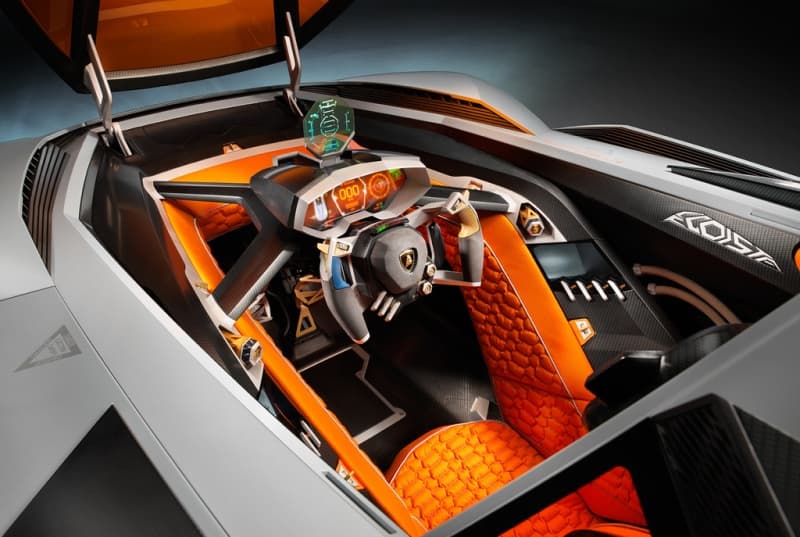
Where things go extreme, however, is in the aerodynamics and the materials departments. Almost every surface that touches the air can move, and a network of computers within the car calculate optimal surface positions hundreds of times per second. This keeps the Egoista in its maximum downforce zone as much as possible, no matter the speed. As well, the Egoista isn’t made from something as ridiculous as carbon composites or even carbon fiber, those materials aren’t insane enough.
To put it simply, the Egoista cost $117 Million US dollars in 2013 to make. The materials it is made of account for 95% of that cost, as the wheels and body, except for inside the cockpit, are made of the exact same radar-absorbing alloys and specialized surface paint that stealth fighters are made from. Carbon composites and the at-the-time newly created carbon-plastic from the Sesto Elemento are what the safety cell of the car is made from, and features a fully functional HUD as a “dashboard” that uses the same projection technology that those aforementioned stealth fighters use.
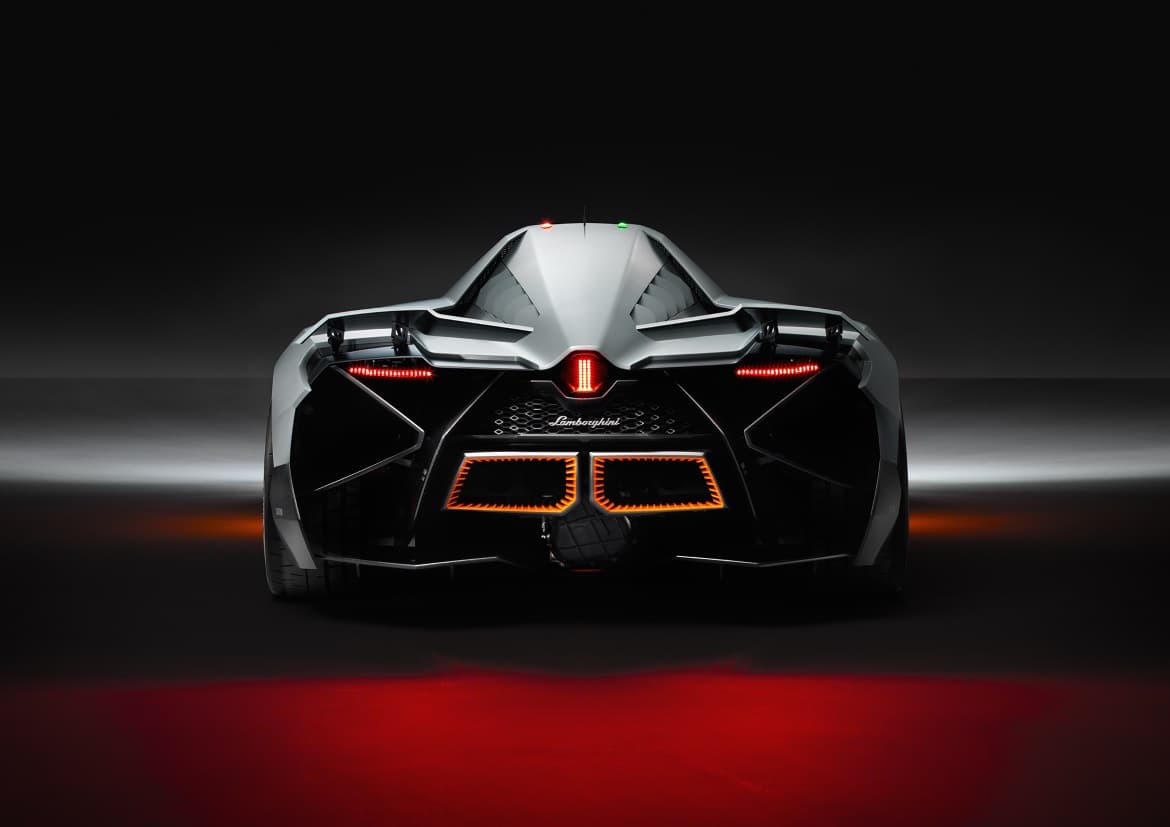
Then again, as a celebration of the 50th anniversary of the company, it does seem quite right to spend a little selfishly on your own birthday present. That is, by the way, how the car was named. According to Walter de Silva, the car represents “hedonism taken to the extreme,” and Egoista, in many European languages, translates directly to “selfish.” A more fitting name has never been assigned to a car in all of automotive history, we think.

